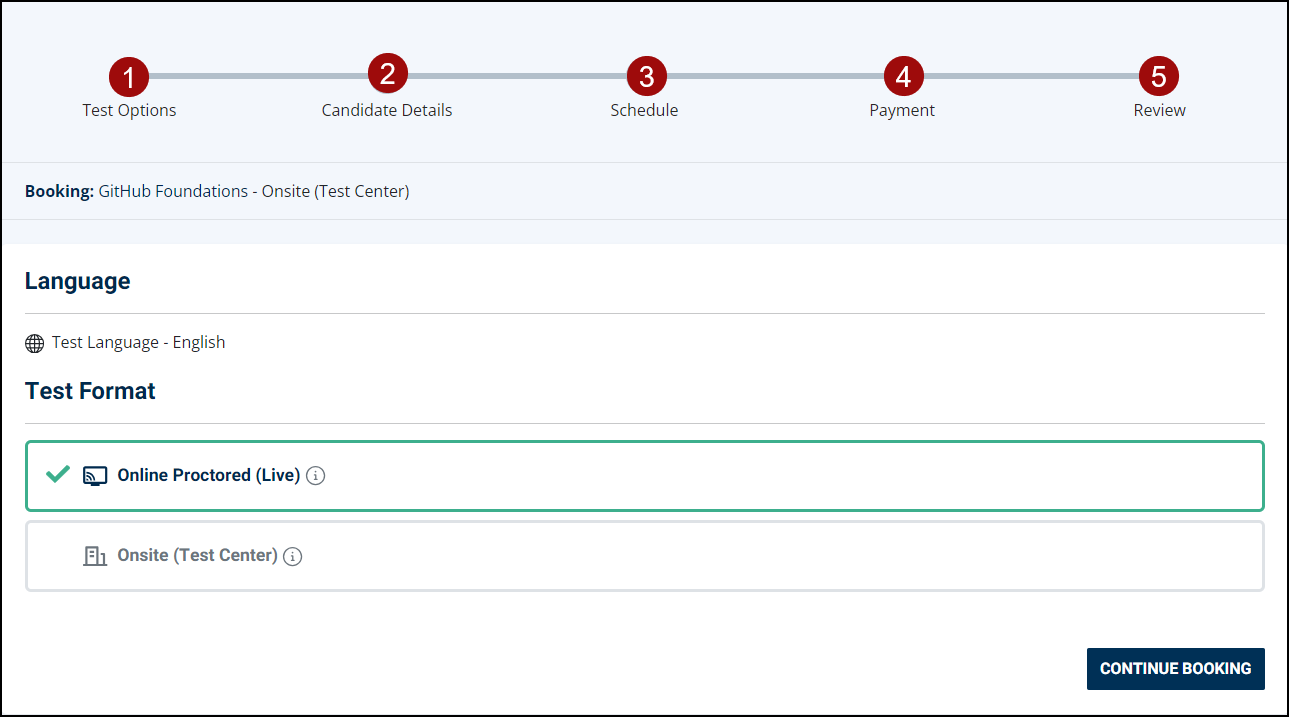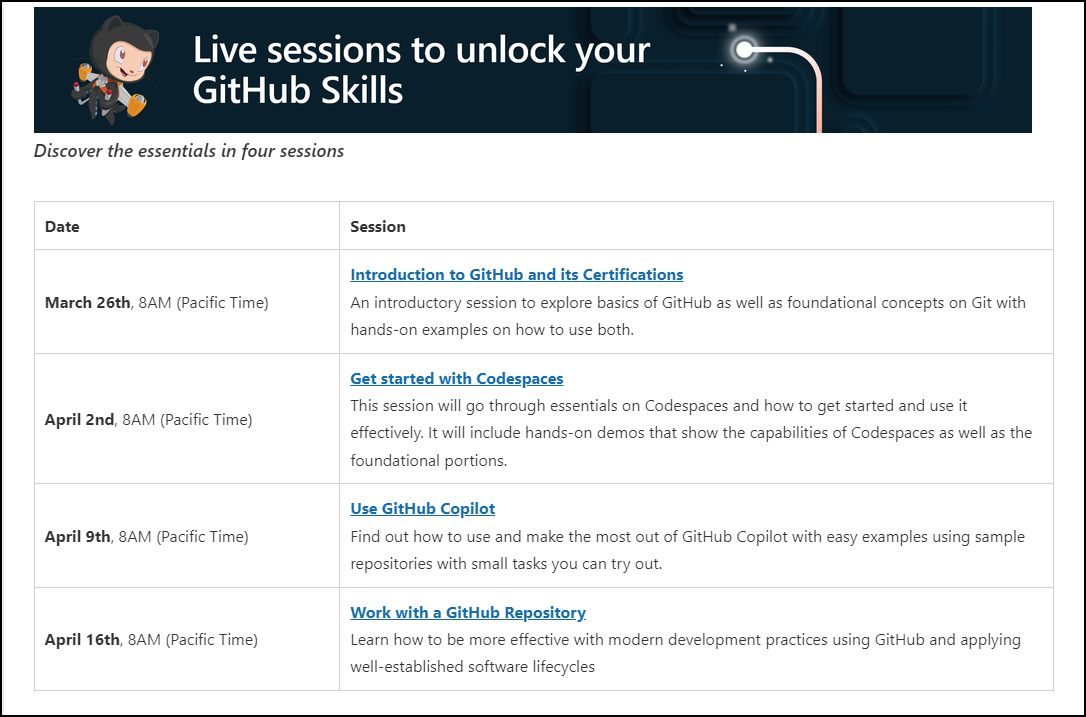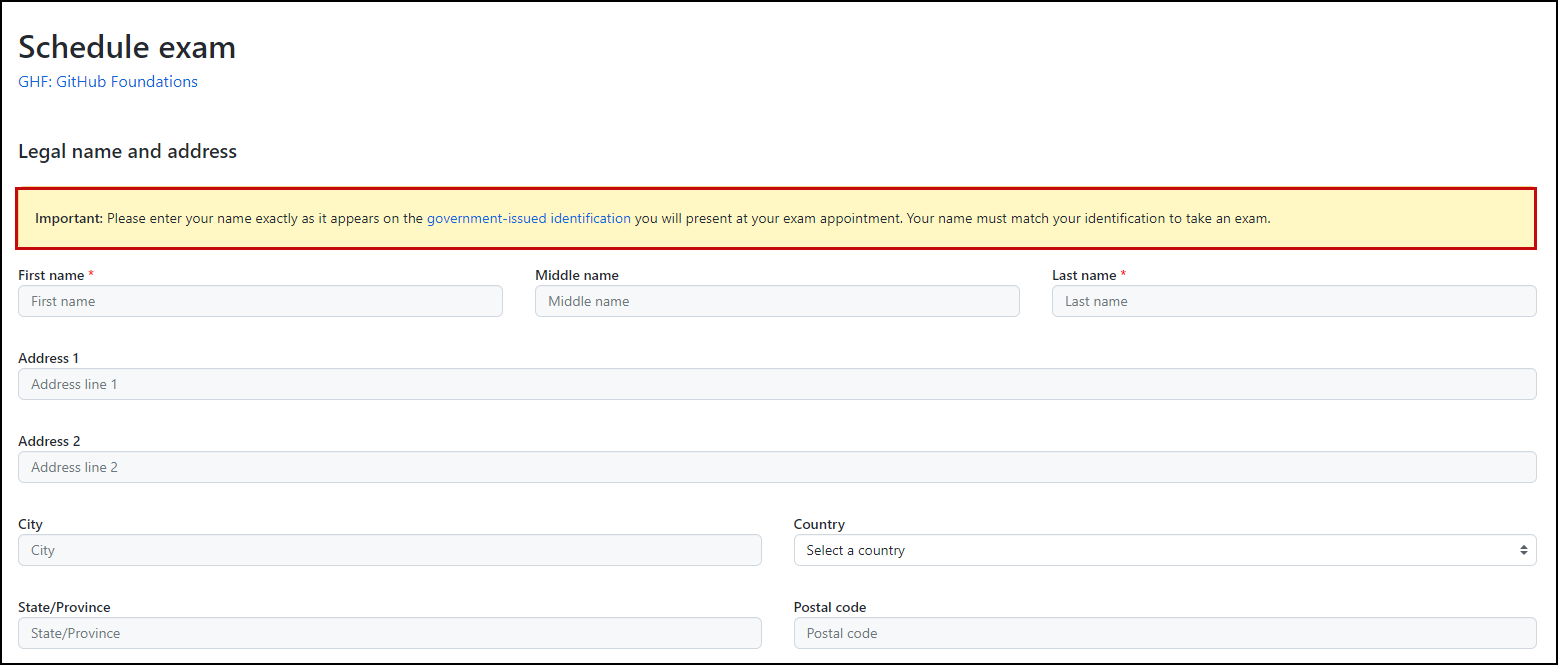How to Pass GitHub Foundations Certification Exam: My Own Certification Journey
Earlier this year (2024), GitHub shared some exciting news: certifications that were once only for their employees and partners are now open to everyone worldwide!
These certifications cover different skills and knowledge areas related to GitHub:
- GitHub Foundations
- GitHub Actions
- GitHub Advanced Security
- GitHub Administration
In this blog post, I’ll be sharing my experience with the GitHub Foundations exam, detailing how to schedule, prepare for, and successfully pass it.
About GitHub Foundations Certification
According to GitHub, this exam covers understanding GitHub platform fundamental concepts, products of GitHub, and concepts of collaborating, contributing, and working on GitHub.
It covers the following domains:
- Domain 1: Introduction to Git and GitHub (10%)
- Domain 2: Working with GitHub Repositories (10%)
- Domain 3: Collaboration Features (15%)
- Domain 4: Modern Development (15%)
- Domain 5: Project Management (20%)
- Domain 6: Privacy, Security, and Administration (20%)
- Domain 7: Benefits of the GitHub Community (10%)
For more details, refer to the Study Guide for GitHub Foundations.
Scheduling the Exam
To register and schedule the exam, visit the Official Exam Website and log in with your GitHub account. Then, select the GitHub Foundation Exam.
Follow these registration steps:
- Choose your test option (Online or On-site).
- Provide your candidate details.
- Select your desired date and time for the exam.
- Complete the payment process. The exam costs $99, but for a limited time, it is an additional 50% off.
- Review your registration details.
Once you’ve completed these steps, you’ll receive an email from PSI Online containing your exam date, time, and important instructions. Make sure to read through them carefully.
Preparing for the Exam
Preparation is key for exams and certifications. It includes planning, understanding the exam content, and dedicating focused study time. Remember to Avoid Relying on Exam Dumps, as they don’t guarantee success. Embrace the process of studying and expanding your knowledge.
For effective preparation, leverage resources such as the GitHub Foundations learning path on MS Learn and the official GitHub Docs, along with other learning and training sources.
Additionally, GitHub and Microsoft are launching the new GitHub Foundations livestream series! From March 27th to April 16th, Register Now.
Personally, I found both the MS Learning path and GitHub documentation to be valuable resources for my preparation.
For quick reference, below is a list of exam topics along with the corresponding links to relevant GitHub documentation:
Domain 1: Introduction to Git and GitHub
Git and GitHub Basics
GitHub Entities
Describe the different GitHub accounts (personal, organization, enterprise)
Describe GitHub’s products for personal accounts (free, pro)
Describe GitHub’s products for organization accounts (free for organizations, teams)
Describe the different deployment options for GitHub Enterprise
GitHub Markdown
Identify the text formatting toolbar on issue and pull request comments
Identify the basic formatting syntax (headings, links, task lists, comments, etc)
GitHub Desktop
GitHub Mobile
Domain 2: Working with GitHub Repositories
Understanding GitHub Repositories
Domain 3: Collaboration Features
Issues
Describe the difference between an issue, discussion, and pull request
Explain the difference between issue templates and issue forms
Pull requests
Recognize how to comment on a posted link to a line or lines of code from a file
Explain the different options for providing a code review on a pull request
Discussions
Notifications
Gists, Wikis, and GitHub Pages
Domain 4: Modern Development
GitHub Actions
GitHub Copilot
GitHub Codespaces
Domain 5: Project Management
Manage your work with GitHub Projects
Domain 6: Privacy, Security, and Administration
Authentication and Security
GitHub Administration
Domain 7: Benefits of GitHub community
Describe the benefits of the open source community
Identify how to follow people (receive notifications, discover projects in their community)
Explain how to follow organizations (receive notifications about their activity)
Describe how to apply the benefits of open source
Taking the Exam (Proctored at Home)
It’s important to sign in up to 15 minutes before your test start time as per the instructions provided when booking your exam. Ensure you adhere to the technical requirements and have a valid, current ID ready. The name on this ID must be in Roman (English) alphabet characters and must match the name used when scheduling the exam.
Make sure to carefully read the instructions sent to you when you booked the exams.
The exam has around 75 questions, and you have 120 minutes to finish it. Once you’re done, you’ll know right away if you passed or failed.
After The Exam
Immediately after completing your exam, you’ll receive an email containing a detailed score report. This report will outline your overall score and the percentage scores for each exam module. It will help you pinpoint areas of strength and areas that may require improvement.
Additionally, you’ll receive a Credly badge that you can share on your social media profiles such as LinkedIn, Twitter, your website, and other platforms. This badge serves as recognition of your achievement and allows you to showcase your skills to others.
Conclusion
Starting the GitHub certification journey has been an enriching experience for me. Going beyond just earning a badge, the preparation process itself enhanced my understanding of GitHub’s tools and workflows.
Whether you’re a beginner or an experienced user, getting certified can solidify your skills. With determination and ample resources, passing the GitHub Foundations exam is within reach. Best of luck on your certification journey.
If you are preparing for GitHub Actions Exam, check out this post How to Pass GitHub Actions Certification Exam: My Own Certification Journey



